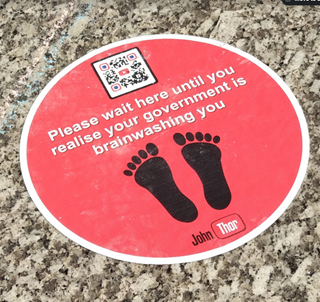From: Andrew Johnson
Date: 2016-01-04 09:12:43
Attachments : www.checktheevidence… www.youtube.com/watc… Experiments with an Egely Wheel Andrew Johnson ad.johnson@ntlworld…. 04 Jan 2016 Some time ago, a friend (George) advised me that he tried out an Egely wheel and he felt that it was “behaving in an unusual way” and that he suggested I try one myself. I originally ordered one from a now defunct site called www.electronichealing.co.uk (see archived version here), but they were out of stock and my money was refunded. I then ordered one via Amazon (not very cheap for what it was!), with a voucher I got for my birthday. The item is no longer available on Amazon either! The device was invented/developed by George Egely, following his research and experimentation into what he called “bioenergy.” The unit itself is very simple – a very lightweight (flimsy) plastic, 6-spoked wheel about 7cm in diameter with a metal cap in the centre. There are about 72 “spines” around the outer circumference of the wheel. The metal base of the wheel has a web address on it http://www.egely.hu/ – not surprisingly, a Hungarian website. More information about the wheel can be found on this page, but it will need translation. (The site also refers to 2 vimeo videos, both of which seem to have been deleted.) In the box there is simply the wheel, its base, a clear plastic cover and a simple instruction sheet. This just has diagrams that show how you should simply place the wheel and base on a flat surface in front of you and then you simply curve your left or right hand and forearm around where the wheel is on the flat surface. The wheel then turns in the direction that your fingers point. i.e. if you use your right hand, the wheel turns anti-clockwise and if you use your left hand, it turns clockwise. Very simple. I tried the wheel with several different people among my family and friends – and the results were fairly consistent – being just as the instruction leaflet showed. I then decided to do some further simple tests – moving my hands to different positions and also using a small bowl of hot (but not boiling) water, placed near the wheel, to see if warm air currents generated by the warm water would affect the movement of the wheel. I must add that I was not using any “powers of concentration” nor was I consciously attempting to move the wheel by thought or any other means. I didn’t meditate nor did I get into a particular “mental state” indeed, if you watch the video associated with this article, you will see that some of my tests are slightly haphazard. Tests and Observations Wheel standing alone. Very slow rotation or no rotation (sensitive to air currents). Left hand curved round, near wheel Slow clockwise rotation. Left hand invested, slightly curved round, near wheel Slow anti-clockwise rotation Left hand curved round, near wheel, thin card in between hand and wheel Slower clockwise rotation then anti-clockwise rotation. When card removed, clockwise rotation resumes… Plastic Cylinder (CD Spindle Cover) Over Wheel. Left Hand Near Wheel No rotation or than residual Right hand flat on table Slow anti-clockwise rotation. Next to Bowl of Warm Water Water was at a temperature of 40C or more – some movement of the wheel was observer but not nearly as much as with the use of hands placed as suggested in the instruction leaflet. On top of Warm Water Bowl Lid Very little movement! Right hand vertical around then touching with left Slow anti-clockwise rotation, stops, then clockwise rotation. When left hand was removed, anti-clockwise rotation resumed Additional Notes/Observations While setting up the camera and tripod, I noticed that the wheel did not seem to turn nearly as consistently if I was leaning forward to reach to it compared to sitting more comfortably. Conclusions Based on the tests above, I cannot fully explain the movement of the wheel. It does not seem to be the effect of air currents – as any air (convection) currents generated by heat from the hands should be similar or the same for hands held in a vertical orientation. Indeed, for hands held flat on the table, one might argue that the convection currents generated should be greater, due to the exposed surface area – yet in these tests, the wheel movement was considerably less. Similarly, the bowl warm water should have generated more air currents than a hand – yet there was little movement of the wheel. This seemed particularly true when the wheel was placed on top of the covered bowl of warm water. Further Tests More tests could be carried out – more thoroughly – using thermometers and other instruments to make measurements more accurate. Similarly, a digital tachometer could he used to measure the rotation speed of the wheel. Different people could be involved and maybe using bare and clothed arms, for example. Implication The device is simple – as are the tests I carried out. However, the implications of the results are extremely significant – as some “force” seems to be being observed – just as George Egely claims. It is as if some “life force” or “bioenergy” is emanating from the hands and causing the wheel to turn clockwise or anti-clockwise.


